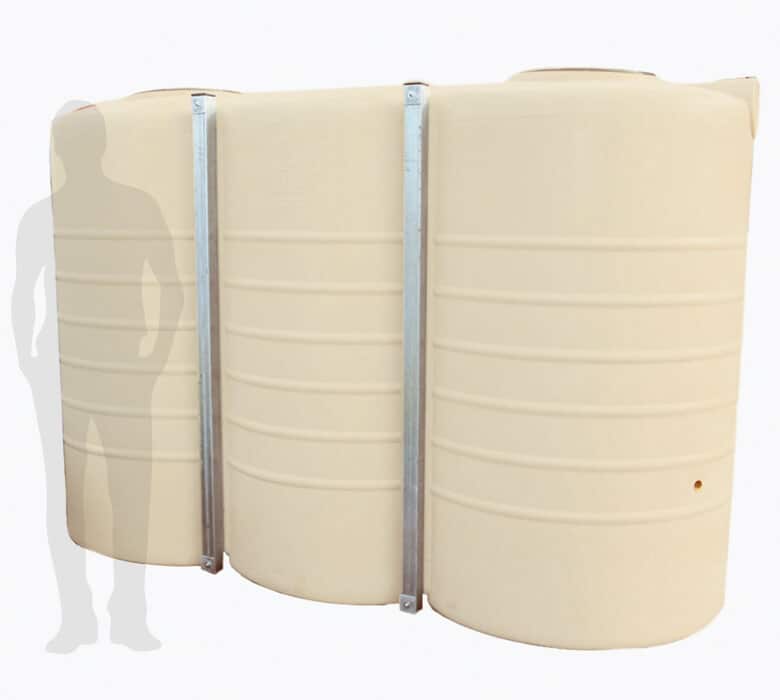Comprehending the Relevance of Rainwater Containers in Drought-Prone Regions for Water Protection
In regions prone to long term dry spells, the duty of rainwater tanks in reinforcing water protection is a subject of expanding importance. Rainwater tanks serve as a crucial device in alleviating the influence of water scarcities by giving a sustainable source of water for different requirements.
Benefits of Rain Containers
Using rainwater tanks provides a sustainable service for increasing water supply and improving water safety and security in domestic and commercial settings. One of the primary benefits of rain containers is their capacity to minimize dependence on mains water supply.

Rain Harvesting Strategies
Rainwater harvesting strategies include a range of approaches created to effectively collect and save rainwater for numerous objectives, contributing to water preservation and sustainability. One more popular strategy is the use of above-ground or below ground storage containers to keep rainwater for later usage.

Moreover, rainfall gardens and permeable sidewalks are innovative methods that entail landscaping or paving surfaces in such a way that allows rainwater to percolate right into the ground, restoring groundwater reserves. Furthermore, shape farming and terracing are farming practices that assist record rainwater and avoid dirt disintegration in hilly terrain. By carrying out these varied rainwater harvesting methods, areas can enhance water safety and security and strength in drought-prone areas while advertising sustainable water management methods.
Value of Water Security
Guaranteeing trustworthy accessibility to tidy and sufficient water resources is critical for sustaining human wellness, financial growth, and ecological health. Water security is a vital element of social durability, especially in areas at risk to dry spells and water deficiency. Ample water protection incorporates various measurements, including availability, quality, and ease of access of water for domestic, agricultural, commercial, and ecological requirements.
Water safety plays a vital function in promoting public health by reducing the prevalence of waterborne conditions and making certain hygiene centers. Economically, water safety and security is vital for agricultural productivity, commercial procedures, and overall economic development. Slimline water tanks. Additionally, water safety is closely linked to ecological sustainability, as it sustains environments, biodiversity, and general ecological balance.
In drought-prone areas, water safety becomes much more critical as a result of the heightened threat of water lacks. Implementing approaches like rain harvesting, water recycling, and efficient water administration practices can dramatically enhance water protection in these areas. By focusing on Visit Your URL water safety, communities can much better withstand the effects of environment modification, populace growth, and various other challenges that intimidate water schedule.
Enhancing Water Durability
With increasing international water difficulties, building strength in water systems has ended up being a critical focus for lasting development efforts. Enhancing water durability entails implementing techniques to make sure water schedule and quality in the face of altering ecological problems, such as dry spells, floodings, and air pollution.
One key aspect of improving water durability is advertising the usage of rain containers in drought-prone areas - Slimline water tanks. Rain containers act as an effective means of capturing and storing rainwater for later use, decreasing reliance on scarce freshwater sources during dry durations. By incorporating rain harvesting systems right into water administration strategies, neighborhoods can improve their ability to endure water scarcity and maintain water safety and security

Sustainable Water Preservation
Among escalating water check challenges, the prudent administration of water sources through sustainable conservation methods is imperative for guaranteeing long-lasting ecological security and social well-being. Sustainable water conservation involves the effective use water sources to meet current requirements without jeopardizing the capability of future generations to fulfill their very own needs. By implementing strategies such as rainwater harvesting, greywater recycling, and water-efficient innovations, neighborhoods can minimize water waste and relieve basics stress on freshwater resources.
In addition, lasting water preservation techniques contribute to ecosystem health by maintaining sufficient water levels in rivers, lakes, and wetlands, supporting biodiversity, and maintaining all-natural environments. These techniques likewise play a vital function in alleviating the influences of environment adjustment by aiding to adjust to transforming rainfall patterns and water accessibility.

Verdict
Finally, rain containers play an important duty in enhancing water safety and strength in drought-prone regions. By using rain harvesting strategies, communities can minimize their dependence on traditional water sources and promote lasting water preservation practices. This not only assists minimize the impacts of water shortage throughout dry spells but likewise adds to lasting water security and resilience when faced with climate adjustment challenges.